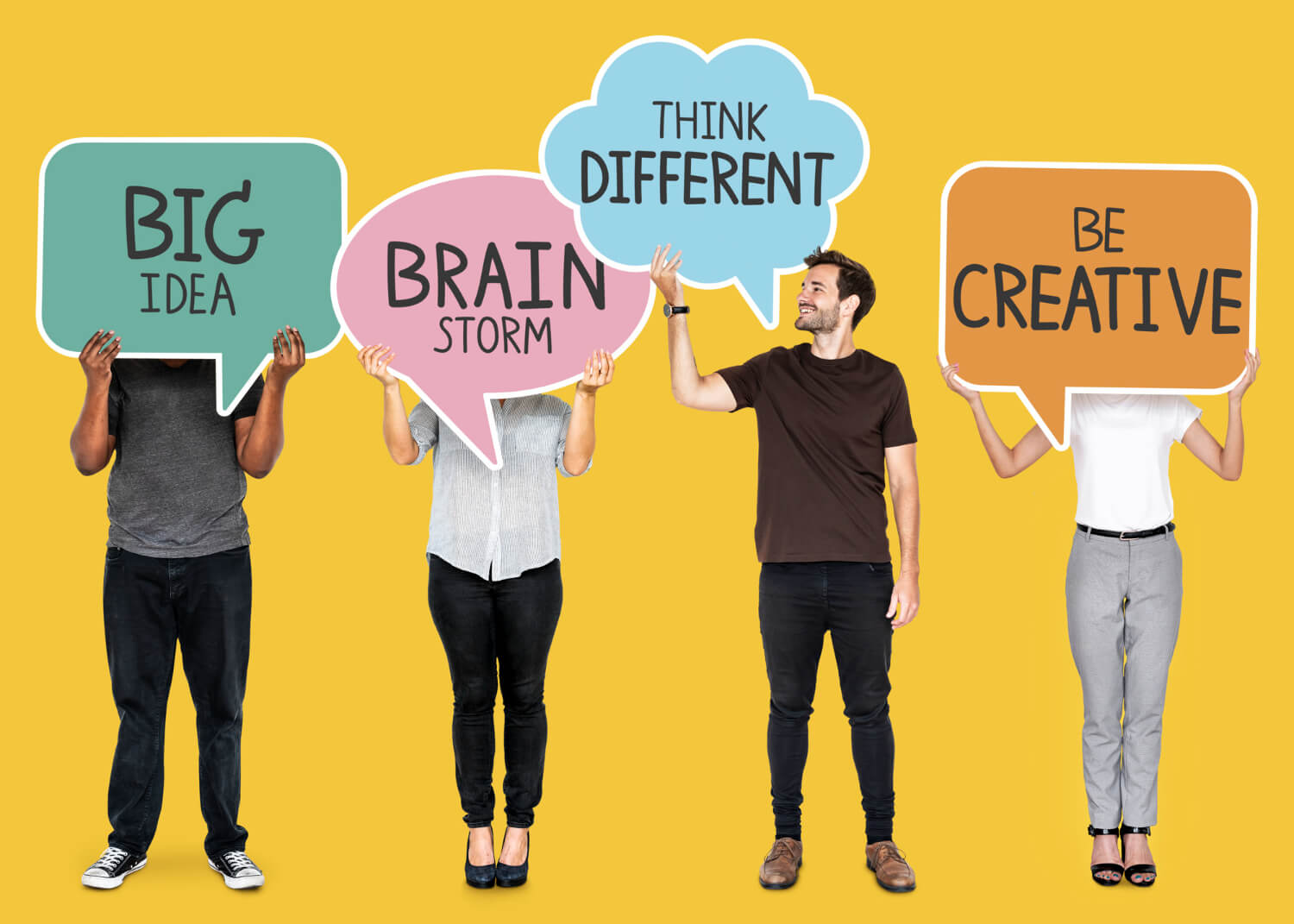Overview of Cynicism in Business Organizations
© Copyright Carter McNamara, MBA, PhD, Authenticity Consulting, LLC.
Cynicism is distrust of the intentions of others, a belief that others are not representing their true motives. Research indicates a growing cynicism among managers and workers in America. However, there are few resources to address this syndrome. Also, it seems, few practitioners (educators, consultants, trainers and developers, human resource personnel, etc.) recognize and/or want to deal with this cynicism.
Consequently, many people, especially those who have gone through many programs in the workplace, promptly resist attempts at organizational change because they don’t completely believe in the reasons for the change. Hopefully, more practitioners will learn to
Literature indicates a high rate of current cynicism, which is expected to continue into the future, yet there are few resources available to address this issue. To better comprehend cynicism, the following provides a definition and description, along with historical information.
Then, reasons are explained regarding why organization members resort to cynicism, and a description is given regarding the general effect of cynicism in business and industry. Next, recommendations are given to address this cynicism. The paper closes with observations and a critique about this research effort, along with recommendations for further study.
Table of Contents
Cynicism in Business and Industry
- Cynicism Is On the Rise
- The Future Does Not Look Any Brighter
What is Cynicism?
- A Definition
- Brief History
- The Demographics of Cynicism
- Outlook of the Cynic
Why Do Organization Members Resort to Cynicism?
- What’s the Use of Cynicism?
- What Causes Cynicism?
Effect of Cynicism on Business and Industry
Recommendations to Address Cynicism
Author’s Observations, Critique and Response
- Observations
- Limits of this Research
- Recommendations for Further Research
References
Also consider
Related Library Topics
Cynicism in Business and Industry
Cynicism Is On the Rise
Research over the past five years indicates that cynicism is on the rise in American business and industry, which increasingly hurts their competitiveness and ability to accommodate today’s needed organizational change. Paul J. Rosen (Hendrick, 1993, p. E1:2), President of the American Institute of Stress, indicates that recent, dizzying changes in technology and the economy are causing unprecedented burnout, cynicism, sickness and absenteeism.
Organizational psychologist and consultant, Philip H. Mirvis, and Professor Donald L. Kanter (1989, p. 377) found, in their national survey of 649 workers, that one bold theme prevailed: “self-interest and opportunism mark today’s wised-up employee.” They classified 43% of these workers as being cynical (p. 379), and 40% of the managers and supervisors as being cynical, as well (p. 381). In a later study (Mirvis and Kanter, 1991), they concluded that more workers were cynical, rising from 43% to 48% (p. 50).
In addition, they found that 65% of American workers agree that people will lie if they’ll gain from it (p. 50), 41% of the population doubts the truth of what management tells them (p. 52), and 49% say that management will take advantage of them, given a chance (p.52).
Over the past 20 years, confidence in business has fallen from 70% to 15%, and ratings of management competence and trust have fallen almost as among workers in the same period (Mirvis and Kanter, 1991, p. 46). Mirvis (1991, p. 2) claims, “It has now reached the point where cynicism is chic and loyalty to the
company is for saps and suckers.”
The Future Does Not Look Any Brighter
Tomorrow’s business leaders are already cynical. Writer Jerri Stroud (1994, p. E1:2) reports that a recent Washington University survey shows that “business students are almost as cynical about corporate managers as corporate people themselves.” Authors and business consultants, Lawrence Bradford and Claire Raines (1992) indicate that among eight core values in “twentysomethings” (the group of 48 million people between the ages 18 to 29), is the value of cynicism. Some social scientists consider them the “why bother?” generation. Writers David M. Gross and Sophronia Scott (1990, p. 62) concur that twentysomethings reject the values of baby boomers, and their major characteristic is to avoid pain and rapid change. “Maybe they are just a little too cynical when it comes to the world.”
Professors Fred H. Goldner, R. Richard Ritti, and Thomas P. Ference (1977) suggest that as today’s organizations become more complex, members become more cynical. This does not bode well, considering that our organizations are indeed becoming more complex as they struggle to respond to increased competition, public expectations, dynamic technologies, and a diverse workforce.
Writer Deirdre Wilson (1989) recounts for us how this increased disillusionment is hurting American business’ competitive edge, as a result of workers’ decreased commitment and productivity. And as business and industry struggles to remain competitive, organizational change efforts are often blocked by cynical managers.
Professor Dennis Jaffe and consultant Cynthia D. Scott (1992, p. 139) explain that managers can undermine large-scale organizational transformation through impatience, emotional illiteracy, elitism, insecurity, poor modeling, anger, and alienation. Mirvis and Kanter (1991) describe cynics as believing that the best way to handle people is to tell them what they want to hear, management never reveals the real reasons behind decisions, it doesn’t pay to work extra hard, and management is more interested in short-term profits than the long-term.
What is Cynicism?
A Definition
The dictionary (Merriam-Webster, 1993, p. 323) defines a cynic as ” one who believes that human conduct is motivated wholly by self-interest.” This should not be confused with a “skeptic,” as defined by the same dictionary to have “an attitude of doubt” (p. 1212). Mirvis and Kanter (1989) are careful throughout their work to remind us that cynicism is different from skepticism which is healthy response to work and life. Skeptics are open to change. Cynics aren’t.
Cultures, as well as organization members, can be classified as cynical. They operate only “for the bottom line”, they scoff at change efforts and management fads, they tolerate shoddy products and services (Mirvis and Kanter, 1989, p. 382). In their latter study (Mirvis and Kanter (1991, p. 61), they describe cynical companies as those that “embody expedient, self-serving values, that support managers who engage in deceptive and exploitative practices, and that communicate in a one-sided, hyped-up, and disingenuous fashion to their employees.”
A good summary description of the cynic comes from Mirvis and Kanter (1991, pp. 50-2). Cynics “agree that lying, putting on a false face, and taking advantage of others are fundamental to human character and conclude that, basically, people are just out for themselves” and that “such cynical attitudes about life are paralleled in attitudes about work.”
Brief History
In the fourth century B.C., a group of philosophers, followers of Antisthenes, flouted “popular opinion or public convictions simply for the sake of doing so,” particularly a prominent member, Diogenes (Copleston, 1985, p. 189) . Greeks deemed these followers “disciples of the dog,” or Cynics. Still, Antisthenes was a serious follower of Socrates, a man of deliberate and applied conviction, and Cynics were perceived as progressive and taken seriously enough to involve in serious debate. As other Greek philosophers (particularly Socrates, Plato, and Aristotle) became more widely known and followed, Cynics soon died out.
However, in the third century, A. D., during the moral corruption of Rome, Cynicism was revived as a school of thought, but this time it “tended to lose its serious character of emphasis on independence, suppression of desire and physical endurance, and to give itself rather to mockery of convention and tradition and prevailing beliefs and modes of behaviour” (Copleston, 1985, p. 142). This impression and use of the term “cynicism” remains today.
Probably the best known work in regard to cynicism is The Prince (Machiavelli, 1952). The book was written by Machiavelli when giving advice to the current Italian prince, describing how to advance self-interest by pragmatically using any means available to advance one’s ends. The book remains a seminal work in studying the art of political persuasion.
The Demographics of Cynicism
Mirvis and Kanter (1991) indicate that higher income and education levels typically are associated with a wider extent of employment choices and freedom, and, consequently, less cynicism. Research indicates young people expect more from society than they get. Young, poor, undereducated, minority and blue-collar workers generally have higher levels of cynicism than older, less poor, more educated, Caucasian, white-collar workers, particularly those in the healing and teaching professions. Men are perceived more frequently as being cynical than women. Middle-aged, or boomers, are not as cynical as younger people. Those over 55 are the most cynical, probably because they have less education, lower incomes, and have been hit hard in recent layoffs. Profit-making organizations had higher levels of cynicism.
Outlook of the Cynic
In their latter research effort, Mirvis and Kanter (1991) found a strong correspondence between people’s general perceptions of society and leadership and their more specific views of their own organization, managers and co-workers. Consequently, it’s important to understand the cynic’s outlook on life. Mirvis and Kanter (1989) “see selfishness and guile at the base of human nature. They agree that people will tell a lie if they can gain by it, that people pretend to care about one another more than they really do, and that people may claim to be honest and moral but act otherwise when money is at stake.” They often consider their view as “realistic.”
Cynics don’t trust management, find the pay system to be fair, think they have fair chance for advancement, don’t believe management listens to them or value their jobs (Mirvis and Kanter, 1989). Cynical managers “are skilled in controlling information and exercising power through operatives” (Mirvis and Kanter, 1989, p. 381) In their mind, they ‘made it the hard way,’ and anyone who has not is weak, naive, inept, or just plain stupid” (Mirvis and Kanter, 1989, p. 381).
Mirvis and Kanter (1989) go on to convey that cynics appear aloof and unfeeling, and treat people as if they were machines. Cynics are open and vocal about how the game is played, they see through company politics and thrive on inside dope. They yield cynicism like a sword.
Why Do Organization Members Resort to Cynicism?
What’s the Use of Cynicism?
Mirvis and Kanter (1991) explain that cynicism is a way to cope with what’s perceived by the cynic to be an unfriendly, unstable, and insecure world. Cynicism provides a ready and convenient explanation for a perception of continued disappointment and disillusionment. And it lets one indulge in their anger and resentment, often acting it out in the workplace.
Mirvis and Kanter (1989, p. 381) explain that cynics use cynical attitudes to “emotionally protect themselves from what they imagine to be the slings and arrows of hustlers and high-ups.” “They blame the ‘system’ for their disappointments and failings.” A cynic can continue to function in most organizations, conducting the day-to-day duties of his or her role. Depending on the nature of how they implement their cynical views and motives, they may even advance up the corporate ladder, based on effective finger-pointing and back-biting. If they crave the acceptance of others, successive promotions may feed this personal need. It’s only after other members recognize the insidious effects of the behavior of the cynic, that “intervention” can occur, often in the form of performance problem identification and response.
Unfortunately, as Mirvis and Kanter explain (1989) because of the obstructionist and covert nature of their behavior, cynics are often perceived as gripers, back-biters, and poor performers. Consequently, they do not succeed in the organization. This, of course, is perceived by the cynic as further manipulation and unfairness by management. And the cycle goes on.
What Causes Cynicism?
Again, Mirvis and Kanter put it best (1989, p. 383) the recipe is simple: “hype up people’s hopes, disappoint them, and then take advantage of them until they become disillusioned.” In their latter study, Mirvis and Kanter (1991) explain there are three key ingredients to cynicism, 1) unrealistically high expectations of oneself and others, 2) the experience of disappointment in oneself and others (and the resulting feelings of frustration and defeat), and 3) disillusionment, and being deceived by others.
These researchers purport that cynicism in American workers has been cultivated a variety of factors, many of them demographical and sociological (1991). Over the past 20 years, there has been widespread organizational pain and frustration as a result of the loss of over 20 million jobs in the 1980s as companies were cutting back, downsizing (“rightsizing”), merging and acquiring more than ever before.
Today’s youth have not found the same job opportunities or equivalent compensation as their parents. The media has had a continued and widespread effect through its singular focus on duplicitous authorities and unresponsive organizations. The Reagan era saw the rich get richer, and America turn into a debtor nation as never before. Greed and avarice came into fashion. Concurrently, the S & L scandal, Congressional scams, and unethical business practices caste a pallor over the ideals of American workers. CEO’s have been reported to be making up to 500 times the lowest salary in the organization. Surveys
indicate that a majority of working people perceive their pay and promotion systems as unfair, and that they aren’t involved enough in organizational decisions.
The seeds of cynicism may have been planted in many of today’s managers as far back as Watergate and Viet Nam. Writer Tara Shioya (1992, p. A1:1) relates that “many people born between 1961 and 1981, of all political persuasions, say (Nixon’s resignation) planted in their minds the seeds of what would later become a profound and widespread cynicism.”
Mirvis and Kanter (1989) describe four aspects of company life that most often disillusion people, including perceptions that the
- pay system is rigged,
- management can’t be trusted,
- company doesn’t care and
- the organization’s time is at a premium.
Effective responses to these concerns, respectively, include widely communicating the rationale and structure of the pay system, making hard truths testable and verifiable, bringing community into the
workplace, and giving organization members more control over their time.
Effect of Cynicism on Business and Industry
The effect of cynicism can be disastrous, particularly if the cynic is a manager. Mirvis and Kanter (1989, p. 382) explain that the attitude of the cynical manager “leads to a workplace environment dominated by a feeling of temporariness, an absence of a lasting vision of what the company and its products ought to be.” Cynical managers convey their attitudes by running the business only for the bottom line, treating long-term strategies as subordinate to those of the short-term, treating employees as “hands,” and tolerating shoddy products. And in managing in a cynical fashion, they insidiously instill cynicism in their
employees and organizational culture. Members live by the law of the jungle.
None of this makes for effective member participation in organizational change efforts. Consultants Carol Sanford and Pamela Mang (1992, p. 157) convey that “it takes equal effort on the part of operators (non-managers) to overcome patterns, one of the most common being the fear and/or cynicism that this is just another ‘program of the month’.” Members perceive change as being done solely in the interest of management. Resulting lack of cooperation in organizational change efforts results in further insincerity and even anger from management, thereby entrenching the status quo and continuing to severely damage the organization.
Cynicism leads to a generalized mistrust of authority, to disparagement of management communications and directions, and ultimately to denigration of the leadership and mission of the enterprise. This is directly counter to the requirements for several key aspects of effective organization development actions. As explained by Professors Thomas G. Cummings and Christopher G. Worley (Cummings and Worley, 1993), it’s vital that the organization development agent establish an effective and trusting relationship with relevant change agents in the organization. This isn’t possible with a cynic, considering their mistrustful nature. Do to this lack of trust, other organization development activities are blocked, including establishing a diagnostic contract, obtaining valid data, accomplishing organizational members’ ownership in feedback data, overcoming resistance to change, and managing the dynamics of and sustaining the change. And it’s certainly unlikely that successful intervention and implementation will take place, considering the need for organization members to provide their ongoing commitment and support.
The disastrous effects of organizational cynicism are beginning to be recognized. Writer Barry Stephen (1994, p. A17) relates that Vice President Gore, after a Georgetown University seminar that compared past management theories and practices with new ideas, urged American executives “to abandon the cynicism
of the workplace culture”; otherwise plans to reinvigorate the nation’s bureaucracy would not succeed.
Recommendations to Address Cynicism
Recommendations for Business and Industry
Mirvis and Kanter (1991) identify six work-related factors that influence work attitudes, including:
- contextual factors (organizations size, shape, job mix, etc.),
- employment content (working conditions, work groups, pay practices, etc.),
- demographics (structural and psychological),
- psychographics (values and lifestyles),
- life content (family structure, income, etc.), and
- the general state of the economy, politics, and society.
Among these factors, the second, employment content, is usually the best predictor of work attitudes and subject of praise or criticism. Cummings and Worley (Organization Development and Change, Fifth Edition, 1993, pp. 165-167) classify issues in employment content as human process and human resource issues, and suggest a several organization development interventions for each type of issue.
Mirvis and Kanter (1991) believe that organizations must address this increasing cynicism by managing more fairly, and operating in an open, honest, straightforward, and particularly, realistic manner. Employees must be able to participate in governance, provide regular reality checks to management, have positive role models, and perceive an open and honest pay system.
Finally, give employees something to believe in. The use of corporate mission and values statement may prove to be useful here, but the major factor is if they are widely distributed, and actively and consistently implemented.
Professors Eric. D. Poole, Robert M. Regoli, and Roy Lotz (1989) suggest that increasing a sense of professionalism may reduce cynicism and work alienation in police chiefs. Regoli, Poole, and Lotz (1981) found that generally only one professional dimension — a sense of calling — reduced prison guard’s cynicism. They suggested that prisons work overall to try to make work an end in itself. Professors Robert M. Regoli, John P. Crank, and Robert G. Culbertson (1989) investigated police cynicism, job satisfaction, and work relations of police chiefs in departments of different sizes and concluded that the larger the organization, the more likely to have more cynical police chiefs, largely due to the less direct communications, control and clarity of directions than in smaller departments.
One must be careful not to extrapolate conclusions about effective addressing cynicism in business and industry from these prison and police studies, because of the markedly different cultures, including the nature of systems, structures, communication and control.
Author’s Observations, Critique and Response
Observations
I strongly suspect there will be soon be a noticeable increase in interest and research in this area, as more organizations attempt effective organization development diagnoses, intervention, and implementations.
Limits of this Research
While remaining keenly interested in cynicism, I continue to be frustrated with the lack of available research regarding cynicism in business and industry. Despite the increase of cynicism in business and industry, there is little research on cynicism, including what it is, what causes it, how it effects organizations, and what can be done to effectively address it. Mirvis and Kanter remain the primary researchers in regard to this topic. Most of the cynicism-related research is in regard to the phenomena in
the police, prison and nursing professions. As mentioned above, one must be careful not to readily extrapolate information from these studies to apply to business and industry.
In addition, findings of this research must be interpretive and suggestive, rather than definitive, considering the limited number of research applications (primarily two surveys via Mirvis and Kanter), large number of influences and consequent research variables that must be considered in understanding cynicism, and the lack of longitudinal data from which to draw reliable conclusions.
Recommendations for Further Research
I recommend that more research be applied to verifying Mirvis’ and Kanter’s findings, despite many of their findings sounding quite intuitive and reasonable. I also suggest that this research be system-based, that is, it should consider the organizations’ systems, structures and processes as they effect the output of
organization members.
—-
References
- Bradford, L. J., and Raines, C. (1992). Twentysomething: Managing and motivating today’s new workforce. New York, NY: MasterMedia Limited.
- Copleston, F. (1985). A history of philosophy: Vol. 1. Greece and Rome. New York, NY: Doubleday.
- Cummings, T. G., and Worley, C. G. (1993). Organization Development and Change (5th ed.). St. Paul, MN: West Publishing Company.
- Goldner, F. H., Ritti, R. R., and Ference, T. P. (1977). The production of cynical knowledge in organizations. American Sociological Review, 42(4), 539-551.
- Gross, D. M., and Scott, S. (1990, July 16). Proceeding with caution: Twentysomething generation is balking. TIME, p. 57-62.
- Hendrick, B. (1993, June 28.) Struggle with stress. Atlanta Constitution, p. E1:2.
- Jaffe, D., and Scott, C. D. (1992). Building a committed workplace: An empowered organization as a competitive advantage. In Ray (ed.), The new paradigm in business, New York, NY: Putnam.
- Machiavelli, N. (1952). The prince. New York, NY: Oxford University Press. (Original work published 1513).
- Merriam-Webster, Inc. (1993). Webster’s Tenth New Collegiate Dictionary. Springfield, MA: Author.
- Mirvis, P., and Kanter, D. L. (1989). Combating cynicism in the workplace. National Productivity Review, 8(4), 377-394.
- Mirvis, P., and Kanter, D. L. (1991). Beyond demography: A psychographic profile of the workforce. Human Resource Management, 30(1), 45-68.
- Mirvis, P. H. (ed.). (1991). Introduction: The new workforce/The new workplace. Human Resource Management, 30(1), 1-5.
- Poole, E. D., Regoli, R. M., and Lotz, R. (1978). Linkages between professionalism, work alienation and cynicism in large and small police departments. Social Science Quarterly, 59(3), 525-534.
- Regoli, R., Poole, E. D., and Lotz, R. (1981). An empirical assessment of the effect of professionalism on cynicism among prison guards. Sociological Spectrum, 1, 53-65.
- Regoli, R.M., Crank, J. P., and Culbertson, R. G. (1989). Police cynicism, job satisfaction, and work relations of police chiefs: An assessment of the influence of department size. Sociological Focus, 22(3), 161-171.
- Sanford, C., and Mang, P. (1992). A work in progress at Du Pont: The creation of a developmental organization. In Ray (ed.), The new paradigm in business, New York, NY: Putnam.
- Sayre, F. (1948). Greek cynicism and sources of cynicism. Baltimore, MD: J. H. Furst Co.
- Shioya, T. (1994, May 2). Nixon’s legacy to new generation. San Francisco Chronicle, p. A1:1.
- Stephen, B. (1994, March 30). Managers urged to abandon cynicism of workplace culture. Washington Post, p. A17.
- Stroud, J. (1994, March 8). Study finds skeptics on campus. St. Louis Dispatch, p. E1:2.
- Warnock, M. (1992). The uses of philosophy. Oxford, UK: Blackwell Publishers.
- Washburn, P. C. (1977). Children and Watergate: Some neglected considerations. Sociological Focus, 10(4), 341-351.
- Wilson, D. (1989, May 2). Cynicism is alive in the workplace. Chicago Defender, p. 11:1.
Additional Perspectives on Cynicism
For the Category of Personal Wellness:
To round out your knowledge of this Library topic, you may want to review some related topics, available from the link below. Each of the related topics includes free, online resources.
Also, scan the Recommended Books listed below. They have been selected for their relevance and highly practical nature.










